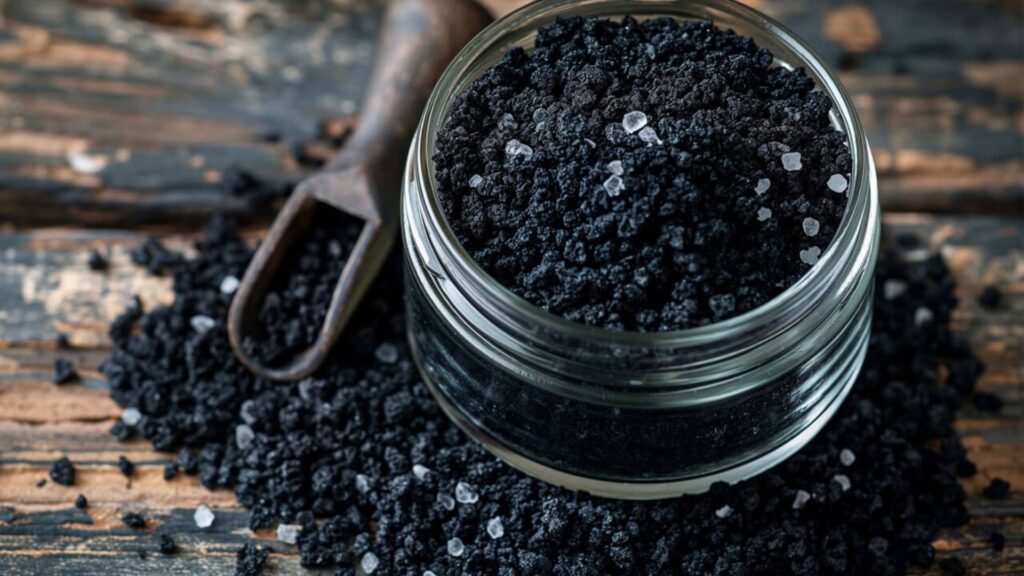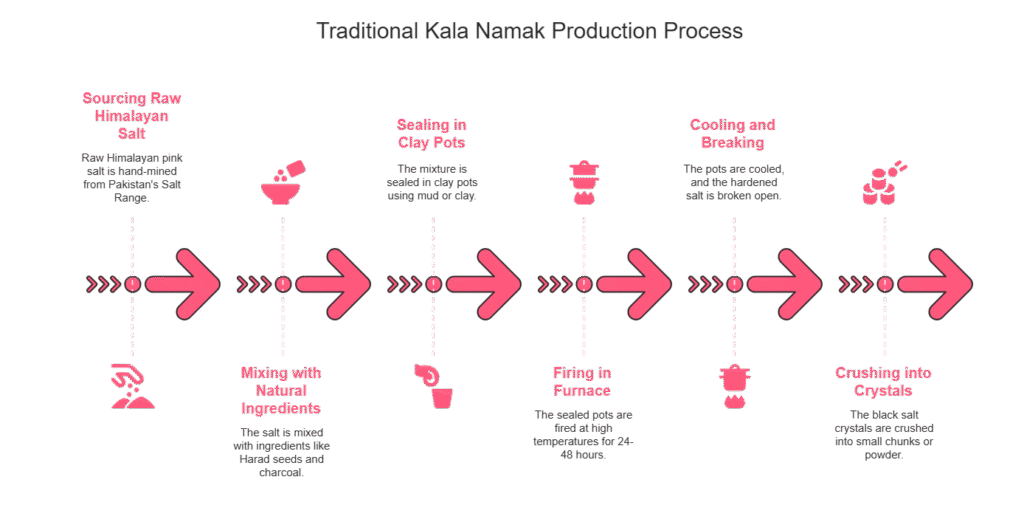How to Make Black Salt (Kala Namak) – A Step-by-Step Guide from Raw Salt to Finished Product
- Zayan Rauf

Black salt, also known as Kala Namak, is a unique type of rock salt known for its smoky flavor, sulfuric aroma, and deep cultural roots in South Asia. Unlike common table salt, black salt is made through a traditional process that transforms raw Himalayan salt into a mineral-rich, deep purple or black crystal with strong culinary and wellness benefits.
In this guide, you’ll learn how to make Black Salt step by step. Whether you’re curious about the Kala Namak manufacturing process or want to understand how this traditional salt is made, breaks it down clearly and simply just like the black salt manufacturers who follow time-tested methods to produce it with authenticity and care.
Table of Contents

The Traditional Process of Making Kala Namak (Black Salt)
From sourcing raw Himalayan salt to heating in clay pots, the process of making black salt involves natural materials and age-old techniques. Let’s go through each step in detail.
Step 1: Start With Raw Himalayan Salt
The journey of black salt begins with raw Himalayan pink salt, which is rich in natural minerals. This salt is typically hand-mined from Pakistan’s Salt Range. The pink crystals are collected in raw form before being processed further.
Himalayan salt is chosen for this process because of its purity and mineral content, which makes it ideal for transformation into black salt.
Step 2: Mix With Natural Ingredients
To give black salt its signature color, taste, and aroma, the raw pink salt is mixed with ingredients like:
- Harad seeds (Terminalia chebula)
- Charcoal
- Amla (Indian gooseberry)
- Bahera
- Natural herbs or spices (optional, depending on the recipe)
These ingredients contain natural sulfur compounds, which are key to the Kala Namak manufacturing process. When the mixture is heated, these compounds react with the salt to create its unique characteristics.
Read More: Black Salt vs Pink Salt: Key Differences
Step 3: Seal the Mixture in Clay Pots
Once the salt and ingredients are mixed, they are placed into clay pots or ceramic jars. These pots are then sealed tightly using mud or natural clay. This step is essential to trap the heat and prevent external contamination during firing.
This method has been used for centuries in traditional black salt processing across India and Pakistan.
Step 4: Fire the Pots in a Furnace or Kiln
The sealed clay pots are placed in a kiln or furnace and fired at extremely high temperatures, usually between 800°C to 900°C for 24 to 48 hours.
During this process:
- The chemical structure of the salt changes
- The pink color deepens into dark purple or black
- Sulfur compounds bond with the salt, giving it that strong, egg-like smell and taste
This heating step is what defines the traditional black salt process.
Step 5: Cool, Break, and Crush
After heating, the pots are removed from the kiln and left to cool naturally. Once cooled:
- The hardened salt is broken open
- The black salt crystals are separated
- The crystals are crushed into small chunks or powder, depending on the intended use
At this stage, the salt is ready for packaging or personal use.
Can You Make Kala Namak at Home?
Technically, you can make Kala Namak at home, but recreating the traditional process safely is difficult without the right equipment. However, some people try DIY methods by lightly roasting salt obtained through Himalayan salt procurement with sulfur-rich herbs in small batches, though this does not fully replicate the authentic process.
For food safety and purity, it’s best to buy from certified manufacturers using traditional methods.
Read More: Does Black Salt Expire
Final Thoughts
Now you know how to make black salt from raw pink crystals to smoky, flavorful Kala Namak. It’s a mix of tradition, chemistry, and natural ingredients, fired together to create something truly unique.
At Sobaan Salts, we honor this traditional process by offering authentic black salt made from the finest Himalayan crystals. Whether you’re a home cook, wellness brand, or manufacturer, Kala Namak remains a timeless and valuable ingredient.
A Health analysis shows that unrefined black salt (Kala Namak) retains more natural trace minerals such as iron, magnesium, and calcium and contains higher antioxidant levels compared to highly processed table salt. These minerals and antioxidants may contribute to better digestion and reduced oxidative stress, making black salt a nutrient-rich alternative for culinary and wellness use. (Source: Health)
Share This Post
Article By

